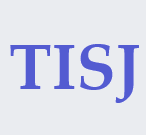Policy lessons from the Italian pandemic of Covid-19
| Published |
| September 4, 2024 |
| Title |
| Policy lessons from the Italian pandemic of Covid-19 |
| Authors |
| José M. Carcione, Jing Ba |
| DOI |
| 10.62684/NZFA6144 |
| Keywords |
| Policy lessons; Italian pandemic; COVID-19. |
| Downloads |
José M. Carcione(a), Jing Ba(b)(c)
(a) National Institute of Oceanography and Applied Geophysics – OGS, Trieste, Italy.
(b) School of Earth Sciences and Engineering, Hohai University, Nanjing 211100, China
(c) Corresponding author. jba@hhu.edu.cn
Abstract
We analyze the management of the Italian pandemic during the five identified waves. We considered the following problems: (i) The composition of the CTS ("Scientific Technical Committee"), which was composed entirely of doctors, mainly virologists, without mathematical epidemiologists, statisticians, physicists, etc. In fact, a pandemic has a behavior described by mathematical, stochastic and probabilistic criteria; (ii) Political interference in security measures and media propaganda; (iii) The initial stages of the vaccination campaign, ignoring the age factor, and (iv) The persistence of the pandemic due to the population unvaccinated (anti-vax or "no-vax"), which amounted to about six to seven million people, including 10% of anti-vax doctors.
Declarations
Conflict of Interest
The Authors declare that there is no conflict of interest.
References
- Brannen, S., and Hicks, K. (2020). We predicted a coronavirus pandemic. Here's what policymakers could have seen coming, Politico, 3/VII/2020.
- Brauer, F. (2017). Mathematical epidemiology: Past, present, and future, Infect. Dis. Model., 2(2), 113-127.
- Callaghan, T., Washburn, D., Goidel, K., Nuzhath, T., Spiegelman, A., Scobee, J., Moghtaderi, A., and Motta, M. (2022). Imperfect messengers? An analysis of vaccine confidence among primary care physicians, Vaccine, 40(18), 2588-2603.
- Carcione, J. M. (2022). Wave fields in real media. Theory and numerical simulation of wave propagation in anisotropic, anelastic, porous and electromagnetic media, 4th edition, Elsevier.
- Carcione, J. M., Santos, J. E., Bagaini, C., Ba, J. (2020). A simulation of a COVID-19 epidemic based on a deterministic SEIR model, Frontiers in Public Health, 8, Article 230. https://doi.org/10.3389/fpubh.2020.00230.
- Cucinotta, D., and Vanelli, M. (2020). WHO declares COVID-19 a pandemic, Acta Biomedica, Atenei Parmensis, 91(1), 157-160.
- Faranda, D., Alberti, T., Arutkin, M., Lembo, V., Lucarini, V. (2021). Interrupting vaccination policies can greatly spread SARS-CoV-2 and enhance mortality from COVID-19 disease: The AstraZeneca case for France and Italy, Chaos 31, 041105 (2021). https://doi.org/10.1063/5.0050887.
- Gallegos, M., de Castro Pecanha, V., and Caycho-Rodríguez, T. (2022). Anti-vax: The history of a scientific problem, Journal of Public Health, fdac048, https://doi.org/10.1093/pubmed/fdac048
- Isonne, C., De Blasiis, M. R., Turatto, F., Mazzalai, E., Marzuillo, C., De Vito, C., Villari, P., and Baccolini, V. (2022) What went wrong with the IMMUNI contact-tracing app in Italy? A cross-sectional survey on the attitudes and experiences among healthcare university students, Life, 12, 871. https://doi.org/10.3390/life12060871
- Kapucu, N., and Moynihan, D. (2021). Trump's (mis)management of the COVID-19 pandemic in the US, Policy Studies, https://doi.org/10.1080/01442872.2021.1931671
- Lesschaeve, C., Glaurdié, J., and Mochtak, M. (2021). Health versus wealth during the Covid-19 pandemic: Saving lives or saving the economy? Public Opinion Quarterly, 85(3), 808-835.
- Morozova, O., Li, Z. R., and Crawford, F. W. (2021). One year of modeling and forecasting COVID-19 transmission to support policymakers in Connecticut, Scientific Reports, 11, 20271.
- O'Driscoll, M., Ribeiro Dos Santos, G., Wang, L., Cummings, D. A. T., Azman, A. S., Paireau, J., Fontanet, A., Cauchemez, S., and Henrik, S. (2021), Age-specific mortality and immunity patterns of SARS-CoV-2, Nature, 590, 140-145.
- Pistoi, S., 2021, Examining the role of the Italian COVID-19 scientific committee, Nature, https://www.nature.com/articles/d43978-021-00015-8
- Waheed, S. M., Kudaravalli, P., and Hotwagner, D. T. (2022). Deep vein thrombosis, StatPearls.

